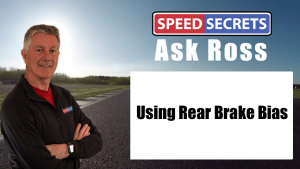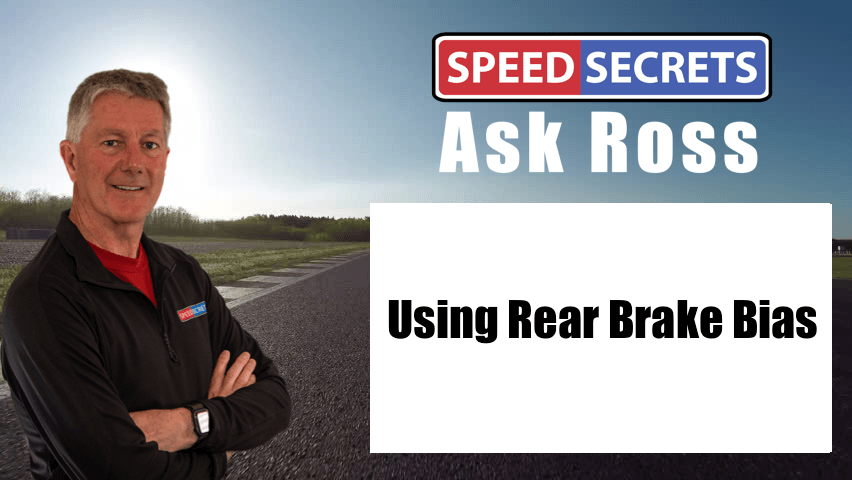 Q: “You talk a lot about rotating the car by trail braking, but I find that I can just dial more brake bias to the rear and get the same thing. With more bias on the rear brakes, the rear tires almost slide when I turn into corners and I can turn in earlier and get to my usual apex. What are your thoughts on this?”
Q: “You talk a lot about rotating the car by trail braking, but I find that I can just dial more brake bias to the rear and get the same thing. With more bias on the rear brakes, the rear tires almost slide when I turn into corners and I can turn in earlier and get to my usual apex. What are your thoughts on this?”
A: The big problem with making the car rotate with lots of rear brake bias is that you’ve compromised the performance of the brakes in a straight line. With that amount of rear brake bias, your car will not slow down as quickly and efficiently. So, yes, the rear bias will help you rotate the car, but it’s hurting you in the approach to the corner.
You can achieve the same corner entry rotation without sacrificing braking performance on the approach to the corner by managing the timing and rate of release of the brakes as you turn in. In other words, managing how much you trail brake. This way you get the most from the brakes approaching the turn-in point, and also the advantage that comes from rotating the car slightly on entry.
Drivers who come from karting are very good with too much rear brake bias because they’re used to it – karts typically only have brakes on the rear axle, so they have lots of bias! They get very good using that rotation when turning into corners, but once they drive cars – with brakes on all four wheels – they take advantage of the better straightline braking performance when approaching corners.
As you probably know, too much rear brake bias can also cause corner entry spins because the rear tires are locking up, or nearly locking up. So, it’s not a very forgiving car setup to drive!
Obviously, many cars do not have brake bias adjustment, so this would only work (even if it’s not ideal) in cars with adjustable bias.
I answered a question about setting and adjusting brake bias in another Ask Ross Q&A a long time ago (but the information is still accurate and relevant). You can find it here.

